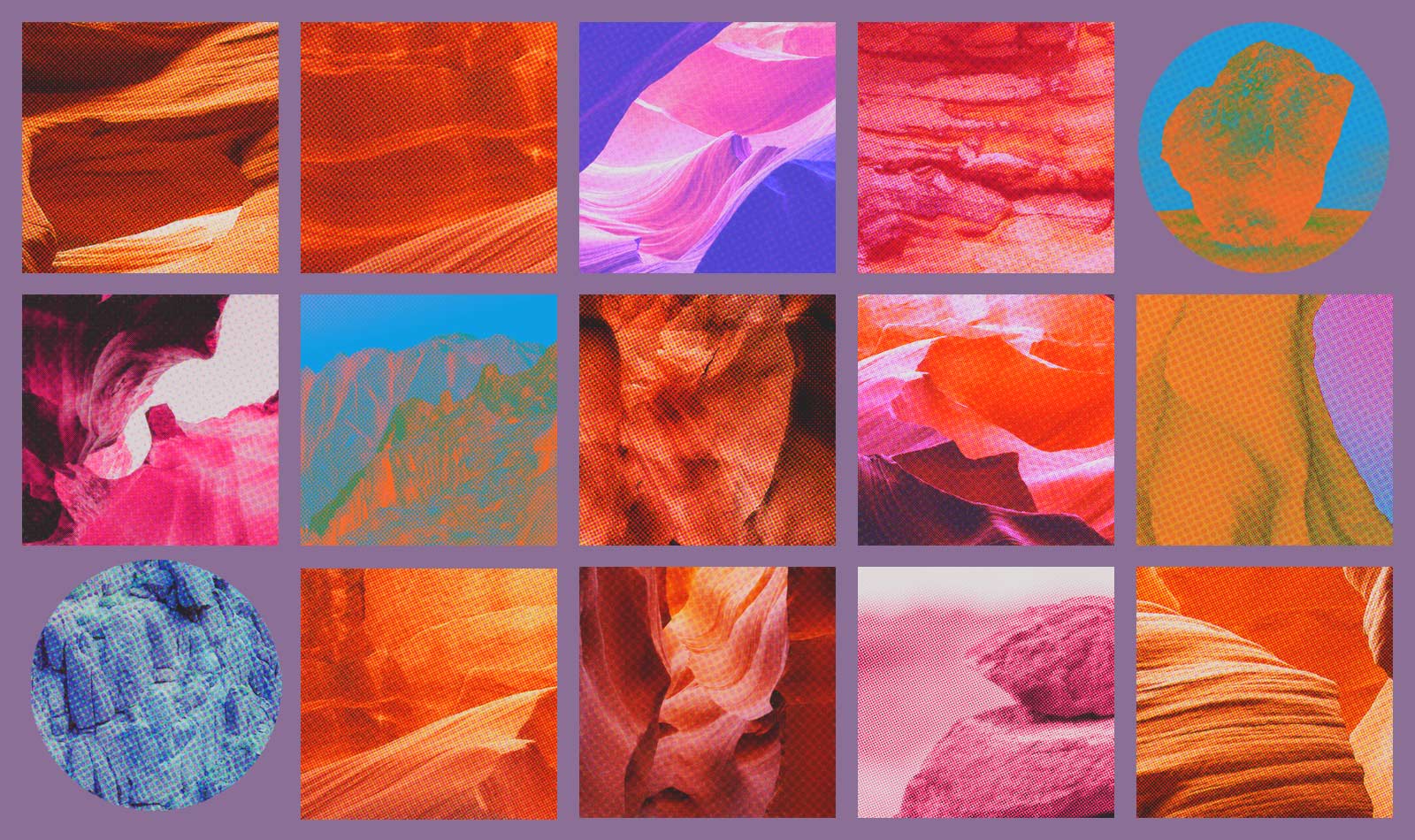
Use Toms. Call It Gorge. Don’t Call It Art. These three instructions constitute the terms and conditions for Gorge Public License, the governing document for Japan’s “gorge” movement.
Celebrating its 10th anniversary this year, gorge is as much a parody of both music scenes and music genres as it is a serious form of expression unto itself. It takes its name from the class of landform better known as canyons in the United States, and uses tom drums to represent the craggy conditions of mountain climbing—the pastime of choice for gorge practitioners, who prefer to be referred to as “bootists” rather than artists.
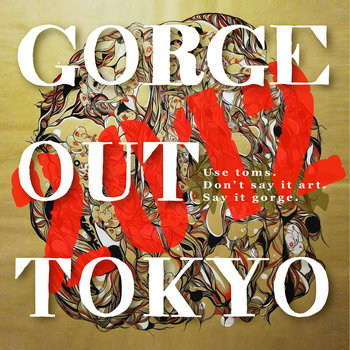

As long as participants make use of the required percussion, the genre can be (and likely already has been) interpreted through the lens of any other genre, from South African club music to vintage krautrock. What matters most is that a bootist contributes to the ever-expanding language and lore of the movement, which revels in dadaist wordplay and intentionally confusing mythology. Bootists drop short experimental projects under pseudonyms like Gorge Clooney or DJ in pitch-dark clubs while wearing headlamps. Tokyo’s GORGE.IN, the label responsible for launching the genre, claims on their website’s “about” section that gorge started in a Nepalese club scene thanks to the efforts of a mysterious “Himalayan Giant” named DJ Nanga. This origin story is dubious at best, but it’s as integral to gorge as the music itself. Even in more organically-formed scenes, truth and legend blur to form an overarching narrative. Gorge just accelerates the process.
I. Rock Formation: The Birth of Gorge

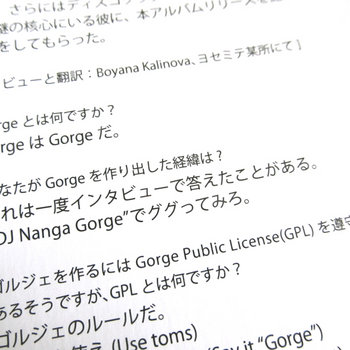
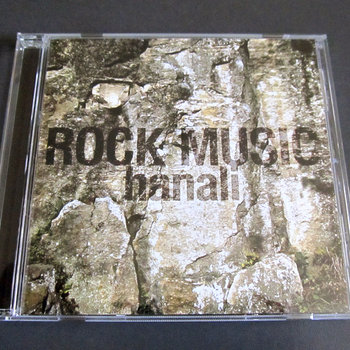
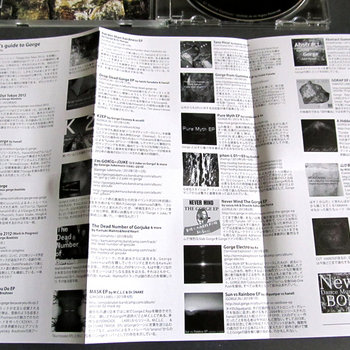
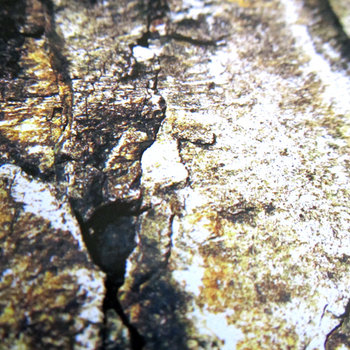







Obscured behind gorge’s tangled web of false identities and tongue-in-cheek creation myths lies the movement’s true founder: Fukuoka-born producer and outdoorsman Toki Takumi, who performs under the alias Hanali.
According to a 2016 interview with GHz, Takumi first became interested in creating electronic music in the mid-’90s as a junior high school student, baffled by a Buck-Tick remix album that included contributions by IDM pioneers Autechre and Aphex Twin. Despite dropping out in his freshman year of high school, Takumi tested into a university in Tokyo, where he fell in love with the improvisational work of avant-garde composers like Otomo Yoshihide and John Zorn. It was there that he began to develop his own live performances, initially playing guitar before learning to produce sounds with the magnetic head of a tape recorder.
Assuming the name of a character from short-lived baseball manga Animal Stadium, Takumi began to release some of his electroacoustic music as Hanali in the late ‘00s. Around the same time, another manga series titled The Summit of the Gods would inspire him to take up mountaineering as a hobby, igniting his passion for the outdoors.


In 2011, Takumi was hospitalized in a climbing accident, leaving him bed-ridden for months. It was during this time that he began to devise the core tenets of gorge in an attempt to channel the sublime beauty and danger of mountain streams into sound. On August 3, 2012, he launched the GORGE.IN label with a pair of full-length releases: Hanali’s Gorge Is Gorge and a compilation of like-minded bootists titled Gorge Out Tokyo 2012, which, together, form a de facto manifesto.
The Hanali record is as opaque and dense as his earlier work, though it yields enough to let Takumi’s tom loops break through the walls of feedback he conjures. There’s a chilling sense of cosmic power pulsing through the album, and the sampled vocals he sneaks deep into the mix make the atmosphere all the more unsettling. “Clap…tom…” announces a tinny, robotic voice, as if it’s giving pre-recorded safety instructions to a panicked crowd, drums shattering on impact.
Gorge Out Tokyo 2012’s cover art is nearly identical to Gorge Is Gorge, with one important distinction: it features the three commandments of the Gorge Public License.
“Gorge is considered open source software, like Linux or Apache, and the Gorge Public License is a tribute to the GNU Public License,” Hanali writes via email. “The creator is free to modify, hack, and create new versions. In other words, the Gorge that someone makes under the Gorge Public License is always the latest version of Gorge, and it is legitimate. No one can deny that. Music has always been this free, but in a genre that has grown to a certain degree, there tends to be a centralized authority or power. Gorge has never had that. It has always been decentralized and local.”


Though the definition of gorge is intentionally left open-ended, members of Hanali’s collective maintain a Pinterest board called “Roots Gorge Archives” in order to establish a proto-gorge canon. Naive garage rock The Shaggs and Beat Happening are cited as influences for their off-beat, tom-heavy drumming, as well as the cut-up production techniques employed by This Heat and Miles Davis.
Mo’ Big Fun, a 2013 gorge compilation on Tokyo’s Lo-Vibes label, was produced in tribute to Davis’s 1974 record Big Fun, which is noted for its frenetically-panned percussion and collage-like layering, two traits shared with the music made by Hanali and company. Sampled horns and atonal synths swirl and stew across bubbling percussion, putting a murkier spin on the record’s already arcane source material. Themed compilations and explicit genre fusions have since become a hallmark of gorge, and would increase exponentially in the years that followed.
II. Runoff: The Cult of Gorge Grows
The mid-‘10s were a breakthrough period for gorge, blossoming from its hyper-localized Tokyo scene into the modular genre Hanali originally envisioned, with smaller hubs of activity happening all over the world. This was set in motion partly due to the release of Los Angeles-based bootist San Gabriel’s 2014 Gorge Sample Pack. An unassuming collection of 20 tom drums, the kit (like the genre itself) is open-ended enough to assume just about any shape an imaginative producer can dream up.
United GORGE Bootists of America
GORGE.US


San Gabriel is better known as Butchy Fuego, an avid mountaineer and experimental drummer who occasionally tours with legendary Japanese noise-rock band Boredoms. Fuego was introduced to gorge through friends in Tokyo’s underground scene while on tour and became intrigued by its fixation on mountains, which were already an influence on his own solo work. Upon returning home, he founded the movement’s first chapter in the states (The United Gorge Bootists of America) and organized a 2016 compilation titled GORGE.US.
Kazuki Koga
The Salathé Wall


Back in Japan, the first wave of bootists were beginning to roll out longer, more ambitious projects. Kazuki Koga’s The Salathé Wall, named for a notoriously difficult climbing route in Yosemite National Park, is a seamless industrial suite broken up into 12 brief movements. The record opens with a machine-gun salvo of toms that bounce from speaker to speaker so rapidly they seem to compress into a single, wriggling unit of rubberized bass. Save for a few eerie synths that resemble ritual chants and a spoken-word interlude by Canadian poet Così e Così, the album is an unstoppable cascade of percussion that sounds as though it’s collapsing in on itself.
A DJ and producer inspired by big beat and Detroit techno, Koga first heard gorge in 2013 via a livestream hosted by Dommune, a virtual club in Shibuya that has been a hotbed for the genre over the past decade. Bored by four-on-the-floor kicks, he was attracted to gorge’s rhythmic freedom and lack of restriction on BPM, allowing him to think beyond the grid of his DAW.
Drastik Adhesive Force
SLAB


Tokyo producer Drastik Adhesive Force is also a club iconoclast, slicing house’s tempo in half to create a lurching sound that he dubs “SLAB music.” His 2015 LP (also called SLAB) creeps forward at a glacial pace, tethering blistering feedback and grunted vocals to beats that resembled chopped-and-screwed death metal breakdowns. The higher end of the mix is sparsely populated by a few bleeping synth tones and stray hi-hats, allowing him to smear thick pulses of bass across the record like it’s a Rothko canvas.
Tea-chi
Island Gorge


Further south, in Okinawa, juke producer Tea-chi would infuse his Island Gorge EP with the tropical atmosphere and traditional folk instrumentation of his home prefecture. His arrangements carefully weave taiko drums, plucked sanshin, and vocal fragments that attain a percussive quality in their new context. The minimalist, glitchy construction of tracks like “Inspired Gorge Work” and “Celebration” isn’t that dissimilar to early works by Chicago footwork artists like RP Boo and DJ Nate, both major influences on the current sound of Japanese club music.
Hiroki Yamamura
ゆーこロータスのGorge & Jukeしようよ
Emerging around the same time GORGE.IN was founded, Japan’s juke scene has had a symbiotic relationship with gorge since the start. “In 2012, Chicago producer Traxman came to Japan for the first time, and I was invited to perform at the event,” says Hanali. “This was one of the first times Gorge became known to the public.” DOMMUNE has hosted a number of “Juke vs. Gorge” DJ battles over the years, which often leads to overlap with local labels like Booty Tune and OMOIDE.
Hiroki Yamamura, who now produces under the name Hyradiance for London’s Moveltraxx Records, released an early gorge/juke fusion EP with GORGE.IN in 2015. ゆーこロータスのGorge & Jukeしようよ is a dissonant, surreal club record that blends ragtime piano, baroque strings, and chopped vocals behind thumping percussion. It’s packed with claustrophobic tension and made even more fierce by a Drastik Adhesive Force remix, which interpolates DJ Nanga’s cyborgian “use toms” sample.
メガネ (Megane)
手さぐり

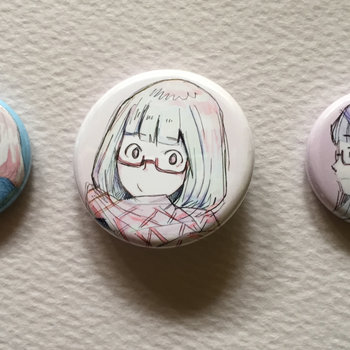






Compact Disc (CD)




A self-described “warm-hearted office lady,” Aichi-based MC Megane raps in a hushed, deadpan cadence over beats that are anything but. Her 2016 debut album, 手さぐり (Tesaguri), enlists production help from an all-star cast of bootists and footwork producers who toy with pitch and tempo in the backdrop, conjuring soundscapes that wouldn’t feel out of place on a Danny Brown mixtape. Labeled GORAP (gorge + rap), Tesaguri gurgles, squelches, and radiates warmth like brewing coffee. No craggy landscapes here. This is gorge music for the breakroom—a brief, caffeinated escape from workplace drudgery.
III. Continental Drift: Gorge Around the World
Indus Bonze
異邦 Gqom 音頭
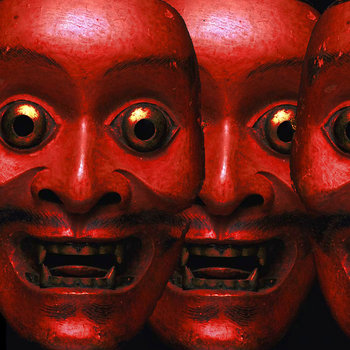

In recent years, gorge has spread to countries like New Zealand, Germany, and Argentina by word of mouth, radically transforming as it interacts with new cultures and aesthetics. At the same time, Japan’s domestic gorge scene draws from a diverse array of regional styles from around the globe. Veteran bootist Indus Bonze’s recent output dabbles in gqom, a South African club genre that—like gorge—prioritizes rugged, polyrhythmic percussion over melody.
There’s also considerable influence from singeli, which shares a laissez-faire attitude to dance music’s conventions regarding tempo. On “秋田 Gqom 音頭,” tom drums shuffle across a static synth pad, forming an amorphous frame for for a collage of looped bells and distant shouts. “2029,” also on the spooky side, is driven by thunderous EBM-adjacent bass that threatens to swallow the entirety of the mix, like a massive black hole.
pantanosumpf
pantanoGORGE


GORGE.IN’s pantanoGORGE compilation, released in late 2020, was recorded by a group of Argentinian bootists associated with South American label pantanosumpf. The collective’s interpretation of gorge is less club-oriented than that of their Trans-Pacific counterparts, often using toms to add meditative texture to droning, microtonal synths. 1134_’s “M0R6U3_XII” is an eerie highlight, filling the sound field with insectoid chirps and the crunch of debris underfoot before dropping an ominous beat nearly three minutes into the track. “Tom y Jerry” by Guidi le shimao wraps meandering guitar melodies and New Age vocal chops around steady bass and rapid-fire hi-hats, creating an eldritch aura.
Hasji
Groves

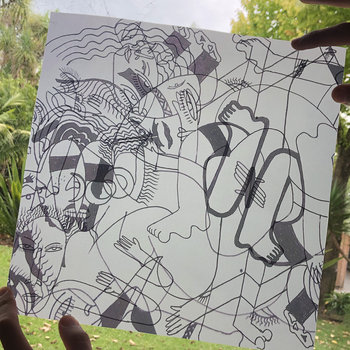



Poster/Print



Based in Tāmaki Makaurau, New Zealand’s largest city, Hasji produces ambient gorge that connects the region’s metropolitan present with its Māori ancestry. The bootist’s immersive Groves EP is a tightly-woven amalgamation of rippling tom patterns and atonal clicks, vibrating through the inner ear that register more as incidental noise than traditional music.
“I’m from a tribe called Ngāti Rangiwewehi, who are from the geothermal region of Rotorua, in the volcanic plateau of the North Island,” says Hasji. “Rotorua has always been a place of rest and healing for many people, with our geothermal hot springs, steam, hot mud and music. As Māori, we consider maunga/mountains to be our tīpuna/ancestors—our relatives that we can confide in, and act as guardians to. This relationship is an example of the interconnectedness that we share, as members of the environment/wider ecology. Something that gorge certainly speaks to also! I consider gorge a brilliant vehicle to speak to this respect for our maunga and wider ecology, as well as a means to personally try and convey a sense okioki (rest) and sonic rongoā māori (natural medicine)—especially for urban Māori like myself who navigate the multitudes of contemporary city life.”
A student of Tea-chi’s island gorge style, Hasji sees the GPL’s loose restrictions as a way to foster kinship during an era in which genre is so malleable it has lost its traditional meaning.
“The act of setting such rigid foundations—which are also so open—really plays with our conceptions of what genre/style really is,” they say.
Twofold
Lost Mecha Tools
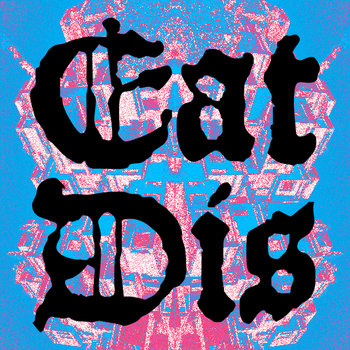

In the United States, gorge has inspired members of netlabel Eat Dis to concoct their own futuristic spin on the genre called mecha. “Gorge is kind of like, focused mainly on nature-related sounds and ideas,” says label member Twofold in a Discord call. “With mecha, there’s a lot more emphasis on combat and futuristic imagery.”
“In the way that gorge is evoking images through sound, mecha’s meant to be a sort of bio-creature that you make through sound,” adds founder DJ Girl. “It’s not really about the structure of the beat, it’s about how you put it all together so that it’s kind of breathing.”
Twofold’s Lost Mecha Tools EP, released in May, sounds like a field recording from inside a spacecraft hangar bay. Reminiscent of Jlin’s skeletal footwork sound design, the track is driven by chaotic 808 percussion and decorated with an overwhelming tapestry of sci-fi sound effects. Alarms blare; drills screw bionic arms into place; snares clatter like steel. While not as tom-centric as traditional gorge production, the ethos remains the same. It’s aural world-building: club music meant to transform the venue itself into a strange, unfamiliar place.
“I heard about gorge from some dude in 2016, in what was basically like a Discord channel,” says DJ Girl. “He sent me a sample pack and everything. I remember initially being confused, and then captivated by it. It really does give you an image in your head of something distinct, but hard to explain. I can’t imagine how it is for people in Japan—it seems like it relates to old spiritual practices and ghost stories. It’s a genre that doesn’t have a tinge to it. They’re just breeding an idea.”
Various Gorge Bootists
Gorge Out “Here” 2022


While GORGE.IN’s inaugural compilation was named Gorge Out Tokyo, the label’s new 45-track opus disregards such geographical distinctions. Simply subtitled “Here,” Gorge Out 2022 captures the genre at a pivotal stage, breaking free from its regional roots and evolving as it’s molded by a global network of users.
Pennsylvania’s (is), aka Isobel Bess, was the United States’s lone contributor, developing a uniquely austere, pensive take on the genre. “I was coming to it from a background making more ambient, minimal, FM synthesizer-based work. I just finished an album of what I call hypnowave,” she says. “I wanted to see if I could combine that hypnowave approach with gorge. Something digital and hypnotic but still massive. I was drawn to some more chill gorge records like Franz Snake’s New Age of Gorge and Tea-chi’s ISLAND GORGE 2. All that led me to the idea of cybergorge. Like what if I could synthesize a kind of virtual mountain? Is that still a mountain? Is it still gorge?”
Bess had previously heard whispers about a mysterious scene of mountain-obsessed producers online, but hadn’t had the opportunity to gorge until late 2021, with the release of Kazuki Koga’s Instinctive Plagiarism EP.
“All of the sudden I was listening to gorge all the time. I wanted to understand what this absolutely massive music was about,” says Bess. “I figured the best way to learn about rock climbing is just to go out and try it, so I started trying to make gorge tracks right away. Now I’m researching mountain trails where I live out in central Pennsylvania. 2022 has really been the year of gorge for me.”
“Gorge’s last ten years have been [an] embryo”, says Hanali. “With this album, gorge’s true story has finally begun to unfold. Next, we would like to do projects like Gorge Out Tokyo 3112 or Gorge Out 12112, projects that will be done in the next 1,000 or 10,000 years. We are not interested in following the changing music scene in the short term. We believe that one day we may acquire bipedalism over a very long period of time, like human evolution.”








